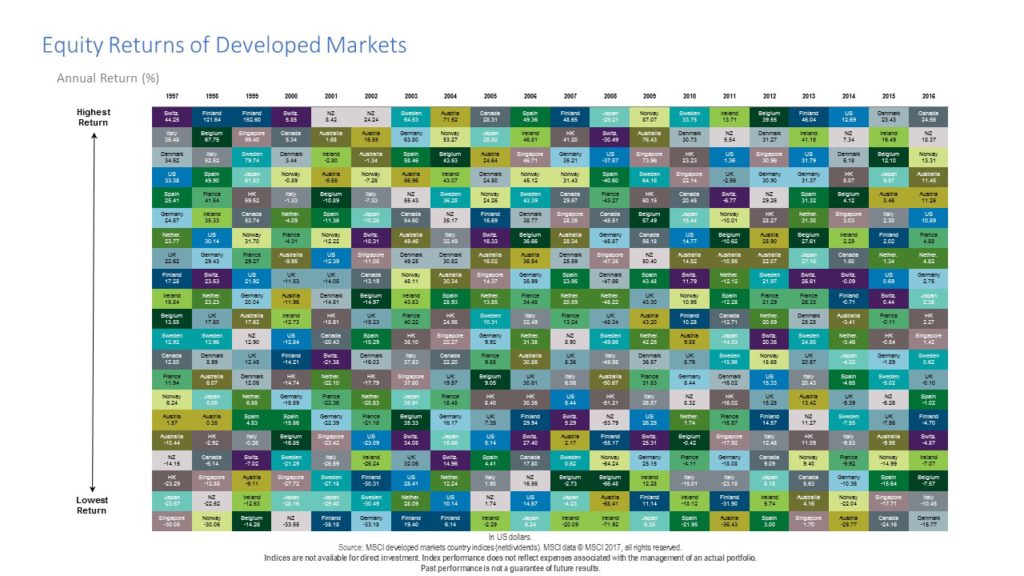Your Retirement Plan Doesn’t Care About January
Have you heard of the “January Indicator” or “January Barometer?” This theory suggests that the price movement of the S&P 500 during the month of January may signal whether that index will rise or fall during the remainder of the year. In other words, if the return of the S&P 500 in January is negative, this would supposedly foreshadow a fall for the stock market for the remainder of the year, and vice versa if returns in January are positive.

I’ve heard this for years. And I can remember early on in my career probably giving it too much attention. After all, the financial news loves soundbites, and this was one that could grab viewer’s attention as we wonder about the upcoming year. But what does the evidence show us? Have past Januarys’ S&P 500 returns been a reliable indicator for what the rest of the year has in store? More importantly, should we care or worry about it? > SEE MORE

Posted by:
Waypoint Wealth Management
Understanding ‘Average’ Returns
The US stock market has delivered an average annual return of around 10% since 1926.[1] But short-term results may vary, and in any given period stock returns can be positive, negative, or flat. When setting expectations, it’s helpful to see the range of outcomes experienced by investors historically. For example, how often have the stock market’s annual returns actually aligned with its long-term average? > SEE MORE

Posted by:
Waypoint Wealth Management
Our Brain And Our Behavior, Part Three
Do you ever do something based on a recent experience, even though you know it might not be the best choice? Or do you ever think to yourself “you know, I’m a better driver than most”? How about watching the market’s movements and subtly measuring your diversified portfolio’s recent returns against a very narrow comparison such as the general market? If you’re like most of us and answered yes to any of these, we’re going to explore how these behaviors can potentially take us off track when it comes to our finances.

This is the final article in our three-part series, where we’ve been exploring the most common ways that our brains can be wired to help us in life—but also can hurt us as investors. > SEE MORE

Posted by:
Waypoint Wealth Management
How Should We Rank The World?
Maybe you wonder as you peruse the global news headlines with your morning coffee: “What really IS inside my international investments, anyway?” Or “Did Turkey’s stock market really go up by 252% in 1999?” Okay, maybe that’s a stretch and you’re not wondering about that. While we certainly hope that’s not on your mind, we do think it’s interesting to peek into the world of our investments and point out the messy truths of international diversification–especially with this area of portfolios doing very well as we head to the end of the first half of the year.
Let’s expand on last month’s post (here), where we reviewed the size (market cap) of markets worldwide. What if we could see the last 20 years’ annual performance, in order, for 41 various countries across the globe? More importantly, what can we learn from it? The picture below ranks the annual stock market performance for developed global markets (from highest to lowest) over the last 20 years:

Click here to view an enlarged image
What can we take away from an image like this, to help us to be better investors? > SEE MORE

Posted by:
Pete Dixon, CFP®
Partner and Advisor
Should We Track an “Index”, or Follow the Evidence?
Legend has it, a pharmacist named John Pemberton was searching for a headache cure when he tried blending Coca leaves with Cola nuts. Who knew his recipe was destined to become such a success, even if Coca-Cola® never did become the medicine Pemberton had in mind?
In similar vein, when Charles Dow launched the Dow Jones Industrial Average (the Dow), his aim was to better assess stock prices and market trends, hoping to determine when the market’s tides had turned by measuring the equivalent of its incoming and outgoing “waves.” He chose industrials (mostly railroads) because, as he proposed in 1882, “The industrial market is destined to be the great speculative market of the United States.”


Posted by:







